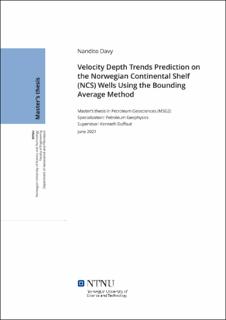| dc.description.abstract | Earth consists of heterogeneous layers due to the complex sedimentation processes, in which lithifies both unconsolidated sand and siliciclastic clays into sandstone and shale. These two sedimentary rocks are the most abundant in the hydrocarbon reservoir, usually in the form of shaly sand or sandy shale mixture. As the advantage of the technology, geophysicists can distinguish these sedimentary rocks by using a seismic reflection method that relies on their elastic properties; P-wave (Vp) and S-wave (Vs) velocities along with density. One option to estimate these velocities are from both compressional and shear sonic logs since these two are reciprocal to the elastic velocities. However, sonic logs may not be available or partially available at specific depth intervals. Lack of these measurements could potentially be problematic for geophysicists that need accurate velocity estimations.
Many rock-physics-based empirical approaches are available for elastic velocities estimations, relying on other parameters such as porosity, clay volume, differential stress, et cetera. However, these empirical approaches are only valid and optimum in the dataset they are using. Therefore, these empirical approaches are susceptible to the robustness issue. We propose a methodology to estimate the vertical velocity depth trends for the three wells taken from the Norwegian Continental Shelf (NCS). The proposed methodology mainly utilizes the rock-physics analysis of Voight-Reuss Bounds and the Bounding Average Method (BAM). It also implements the petrophysical analysis to estimate the lithological volume fraction of sand, clay, and silt. We designed two different models, namely the implicit and explicit clay-bound water.
The challenges of this proposed methodology are to simulate the depositional variations between (1) Clean sand and clay; (2) Consolidation states as the rock changes from freshly deposited and later compacted; and (3) Velocity stress-sensitivity along with the burial depth. This proposed methodology yield correlation coefficients and error percentages, respectively between 0.7326 - 0.9521 and 7.73% - 15.07% for Vp; and respectively between 0.7495 - 0.9585 and 16.2% - 27.66% for Vs. These values show that the methodology is reliable but straightforward enough to perform robust predictions for the vertically-propagating elastic velocity depth trends. | |
